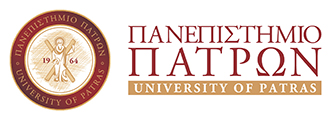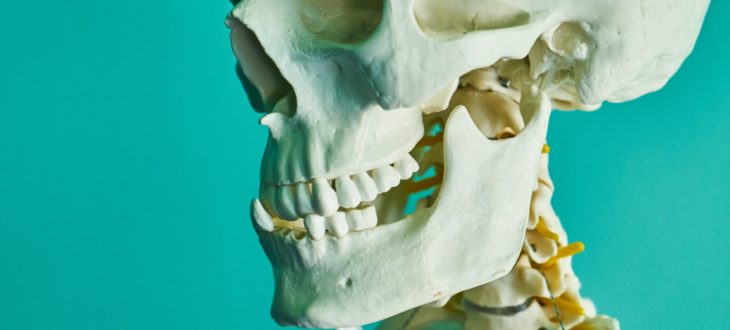Coordinator: Kostis Gyftopoulos
LECTURERS:
ANATOMY: Kostis Gyftopoulos, Dionysios Papachristou, Martha Asimakopoulou, Vicky Bravou, Spyros Syggelos, Anastasios Goulioumis
PHYSIOLOGY: Adamantia Mitsakou, Elias Kouvelas, Georgios Kostopoulos
AIM & OBJECTIVES: The ANATOMY-PHYSIOLOGY course includes teaching of the basic principles of Systematic Anatomy and Human Physiology necessary for Medical Physicists. At the end of the course the students should be able to use the acquired knowledge in order to:
1. Understand the basic anatomical terms and physiological functions of the human body in order to communicate with Physicians.
2. Understand the basic anatomical and physiological principles of disease related to different systems and regions of the body.
3. Combine basic knowledge of human anatomy and physiology with relevant knowledge in other Medical and Physical disciplines.
COURSE CONTENT: (2 hr lectures)
ANATOMY:
- Introduction to Human Anatomy
- Introduction to microscopic Anatomy: cells and tissues, the epithelial tissue, the connective tissue, the nervous tissue, the muscle tissue.
- The musculoskeletal system: principles of bone and cartilage embryogenesis, principles of skeletal muscle action and coordination, principles of walking. Anatomy of the musculoskeletal system by regions of the human body.
- The respiratory system: Principles of respiration. The upper respiratory system, nose –mouth, larynx and pharynx. The trachea and bronchi. The alveolar system, gas exchange at the alveolar level, principles of lung mechanics, pulmonary function tests-spirometry.
- The heart: the heart as a pump, basic mechanics. The structure of atria and ventricles. The heart valves. The conduction system of the heart, principles of the electrocardiogram. The coronary arteries- pain and myocardial infarction. Regulation of blood pressure-principles of blood pressure measurement.
- The vascular system: Formation of different vessels, the arteries, the veins, the lymphatic vessels. Role of the lymphatic system. Anatomy of major vessels by regions of the human body.
- The endocrine system: principles of hormonal regulation. The endocrine glands: the Pituitary gland, the Thyroid gland, the Parathyroid glands, the Adrenal glands, the Pancreas, the Gonads, the Pineal gland, other hormone-producing structures.
- The gastrointestinal system: Major functions of the GI system. The mouth, the oesophagus, the stomach, the small and large intestine, the anus. The major GI glands –liver, pancreas.
- The nervous system: Principles of nerve conductivity. The central nervous system –brain and spinal cord. The peripheral nerves, the autonomous system (sympathetic and parasympathetic system.
- The urinary system: Principles of urine production, storage and excretion. The kidneys, the ureters, the urinary bladder, the urethra. Control of urine storage and voiding.
- The male genital system: Comparative view of the male and female embryonic origin of the genital system. The testis, vas deferens, seminal vesicles. Sperm production and factors affecting normal reproductivity. The prostate. The external genital organs. The penis and the normal erection and ejaculation mechanism.
- The female genital system: the ovaries, the uterus and fallopian tubes. Importance of uterine structure. The effects of the menstrual cycle. Hormonal effects in the genital system. The vagina, the external genitalia.
PHYSIOLOGY:
1. Introduction to Human Physiology: Fundamental life-supporting mechanisms- Homeostasis, Intercellular communication and energy metabolism.
2. Physiology of the Nervous System: Membrane electrophysiology and spinal reflexes. Brain mechanisms underlying motor and sensory control, memory and emotions.
3. Physiology of the Cardiovascular System:Functional anatomy, Electric properties of the heart, Cardiac action potentials, Natural excitability of the heart, Ionic basis of excitability, Electrocardiography, Cardiac cycle, The arterial system, arterial elasticity, determinants of the arterial blood pressure, systolic, diastolic, mean and pulse pressure, stroke volume, cardiac output, functions of the arterioles, functions of the capillaries, The venous system, Regulation of the heart and vasculature, regulation of heart rate and myocardial performance, Law Frank-Starling, Effects of autonomic nervous system, Control by higher centers, Baroreceptors’ reflex, Local factors.
4. Physiology of the Renal System: Glomerular filtration, Sodium transport in the renal tubules and regulation by the hormone aldosterone, Water balance, Feedback mechanism for the control of plasma osmolality and the role of the antidiuretic hormone, Mechanism of urine concentration, pH regulation by the kidneys.
5. Physiology of the Gastrointestinal System: Esophageal function, secretion of saliva, gastric and pancreatic secretions, bile secretion by the liver, digestion and absorption.
6. Physiology of the Respiratory System.
TEXTBOOKS:
ANATOMY:
1η choice
Τίτλος: Ανατομία (Human Anatomy)
Συγγραφείς: : Marieb, Wilhelm, Mallat
Εκδοτικός οίκος: Ιατρικές εκδόσεις Λαγός (Pearson Education Inc)
2η choice
•Τίτλος: Εγχειρίδιο Περιγραφικής Ανατομικής
Συγγραφείς: : Platzer, Fritsch, Kuhnel, Kahle, Frotscher
Εκδοτικός οίκος: Broken Hill Publishers Ltd
PHYSIOLOGY:
- Berne and Levy Physiology, upgraded 6th edition, Editors B.M. Koeppen and B.A. Stanton, Elsevier
Additional Material: Course ppt presentations and notes. Chapters on certain topics by K. Gyftopoulos.
GRADING POLICY: Written exams at the end of the semester. Examination includes MCQs, short essays and Clinical Problem solving. Minimum passing grade: 5/10.

